 By Harry Green By Harry Green
April21st, 2021
BURLINGTON, ON

Since its advent, online poker has, in many ways, represented a closed ecosystem – a self-sustaining microcosm of the wider world of gaming – which continues to thrive and succeed within a significant, global player base despite the slightly more capricious tides of the gaming industry as-a-whole.
What it offers is something that was capable of withstanding years of development and innovation across the entire industry. When gaming moved away from browser-based titles, and toward expensive and powerful console shaped by the AAA developers of the world, the realm of online poker persisted – buoyed up by its own prestige within a growing market.
But that was then, and now represents an entirely new phase for the gaming industry. Since early 2020, the promise of a new generation of gaming – one that would be ushered in by the near-simultaneous launch of new, power-hungry consoles from Sony and Microsoft – has begun its long and highly anticipated journey into realization.
And, to be sure, the future does look bright for gaming – and for the 2.69 billion active gamers in the world. With cloud gaming promising unbridled freedom of choice to gamers, the PlayStation 5 and Xbox Series X enabling better speeds and graphics than gamers could have imagined in their wildest daydreams, and other factors such as 5G ensuring that the framework is there for this new order to fall into place.
With this in mind, can the usual status quo continue on? Or will this genre begin to suffer beneath the weight of the entire industry?
 Australian gamers have descended on California for BlizzCon, a video gaming competition. Read more below.
Events Continue to Grow in Significance
In the real world, poker has long since represented a significant sport, drawing in spectators and professionals from far and wide. As the internet found its foothold in everyday usage, poker’s global influence naturally trickled across the boundary that lies between IRL and online gaming, thus giving rise to a wide variety of online and hybrid tournaments.
Most notably, the World Series of Poker – an event which finds its origins in the 1970s – has made waves via its online circuit in recent years. Just last year, leading online destination and official partner of the WSOP GGPoker broke a Guinness World Record for the prize pool generated within its tournament, which totaled more than $27,500,000.
Continued Growth Enabled Continued Improvement
It stands to reason that the larger a site is, the more scope it has for organizing a near-continuous stream of promotions and tournaments throughout any given day. This is why so many players are drawn to the industry’s largest providers – a continuously expanding pool of players naturally entails that the provider is able to expand their offerings, and hone the daily, monthly and annual events on offer.
In this way, the ecosystem of online poker is essentially self-sustaining. The industry’s biggest providers make use of the growing availability of competitors to ensure a steady stream of cash games and tournaments, and, in turn, they attract yet more players onto their site. This has been one of the key driving forces within this industry for many years, and will continue to push it forward indefinitely.
Software Development Stands at the Forefront of the Gaming World
In the very early days, online poker rested on software that would, by today’s standards, be considered pretty simple and in many ways primitive. Now, however, providers need to be prepared to keep up with their players – and players are growing increasingly discerning when it comes to strong game design and development.
Between their browser-based titles, downloadable software and their mobile platforms, the best providers are well aware of the necessity that exists to remain at the cutting-edge of development, and will continue to prioritize this going forward.
 Players are primed and ready for a new ‘high standard’, and an increasingly discerning global player base, as they emerge in the coming months and years. While it remains a universal truth that the gaming world is accelerating far beyond the parameters that have, for many years, defined it, the fact remains that the world of poker – both online and off – is primed and ready for a new ‘high standard’, and an increasingly discerning global player base, as they emerge in the coming months and years. We can anticipate plenty more development in this arena, and for the world’s biggest operators to continue to push the bounds further still, and ensure that players never grow restless within this historic and massively influential genre.

 By Sarah Miller Liana By Sarah Miller Liana
April 21st, 2021
BURLINGTON, ON
Reprinted from the Christian Science Monitor
The headline read:
‘Humbling’: Canada’s self-image slides in pandemic as US rebounds
Last year, as the first wave of the pandemic waned, Canadians were grieving from the toll of it all. Yet they were also relatively grateful – especially as they looked at their neighbor to the south.
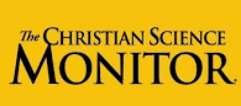 The pandemic amplified all the things Canada lauds itself for when it compares itself with the United States – as a nation that is a fraction of the size of the powerhouse next door often does. Its universal health care, a functional government, a communal spirit, and a rule-abiding culture were held up as reasons that case numbers stayed reasonably low. The U.S., meanwhile, bickered about masks and whether the virus was a hoax as cases surpassed anywhere else in the world. The pandemic amplified all the things Canada lauds itself for when it compares itself with the United States – as a nation that is a fraction of the size of the powerhouse next door often does. Its universal health care, a functional government, a communal spirit, and a rule-abiding culture were held up as reasons that case numbers stayed reasonably low. The U.S., meanwhile, bickered about masks and whether the virus was a hoax as cases surpassed anywhere else in the world.
Now Canada finds itself amid a daunting third wave. And as the U.S. has flexed its muscle in an ambitious inoculation campaign, a counter-narrative is emerging among some Canadians that finds them unsettled but also humbled. It underscores a national inclination toward comparative assessment that can often blind the country to its own shortcomings on everything from gun violence to racism to health care – and make it too hard on both the U.S. and itself.
For months, Canada looked at the U.S. pandemic response and felt a sense of superiority. But now the narrative has flipped, and it’s pointing to the danger of building a sense of self-worth on comparisons.
“A year ago it was all about how America breaks the rules … while we are a ‘play by rules crowd,’” says Michael Adams, the president of the Environics Institute, which measures Canadian attitudes. Now the narrative centers around just how much of a global leader in science, manufacturing, and distribution the U.S. is while Canada waits.
“You need a balanced view,” he says. “We – the world and Canada at the head of the list – are benefiting from American innovation and an American can-do philosophy. You can’t just look at America through all the problems they have.”
For the first time, as the world enters year two of the pandemic, Canada has surpassed the U.S. on a per capita basis for the number of new COVID-19 cases, shaking its sense that its compliant culture or commitment to public health would protect it from the worst playing out south of the border.
Today, while many Americans start traveling and tasting a return to normalcy, many parts of Canada have entered their darkest moment. British Columbia has issued a “circuit breaker” shutdown. Quebec extended a months long curfew, ordering residents home by 8 p.m. in some cities like Montreal, leading to protests there.
Ontario, where 40% of Canadians live, has been hardest hit. This week it announced it was shuttering schools indefinitely. Hospitals have canceled all but emergency surgeries for the first time since March 2020 and are preparing field hospitals as record cases wallop the province.
Meanwhile, the U.S. has been far faster at providing shots to those who want them, with 38% of Americans receiving one dose versus 22% of Canadians. Canada is dependent on global supply chains for its doses, and is hoping to get more surplus from the U.S. All this feeds directly into Canadian perceptions of how they stand next to the U.S.
Aisles of non-essential goods are cordoned off at a Walmart store, as new measures are imposed on big-box stores due to the pandemic, in Toronto, April 8, 2021.
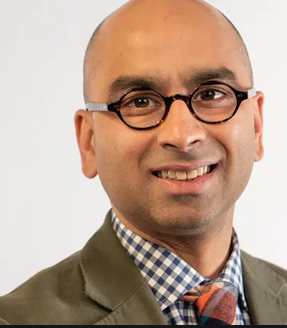 Randy Boyagoda: professor of English at the University of Toronto “Canadians define themselves against the United States, and did so perhaps with greater satisfaction and justification over the past four years, and in particular during the dramatic playing out of the pandemic over the past year,” says Randy Boyagoda, a Canadian novelist and professor of English at the University of Toronto. “Now Canadians are forced to reconsider one of the fundamental features of their self-understanding.”
The founding idea of Canada lies in “peace, order, and good government.” Dr. Boyagoda saw proof of that reiterated in the orderly, yet slower, vaccine rollout where he is in Ontario. But is orderly always the best way forward if it gets in the way of dynamism and speed? “Eight months ago, we were taking great satisfaction in not having the same public health situation as in the United States. I think right now we take less satisfaction.”
The current situation is just a snapshot in time; Canada’s per capita death toll is still only a third of that of its neighbor. But the reversal comes as a punch, particularly because it involves health, one area where Canadians overwhelmingly agree their model is superior to the market approach taken in the U.S.
Kate Snider, a high school student in Toronto, is a Canadian American contemplating where to go to university next year: “Last year I was apprehensive about applying to any U.S. schools.” Right now “it seems to be a lot safer in the U.S.”
What Canadians fault most is what they see as a political response in many provinces that they find incoherent. The country’s current plight has spurred important debate, on topics ranging from the demise of Canadian manufacturing capability to provinces not offering workers paid sick leave. But there is also some sense of “humbling,” says Richard Nimijean, who teaches Canadian studies at Carleton University in Ottawa.
Rethinking the comparison
Comparing Canada with the U.S. often has a distorting effect on issues, whether it’s pandemic response, racism, police and gun violence, or poverty. Faring better than the U.S. on most measures can promote a complacency that makes it difficult to tackle internal problems.
 Richard Nimijean: teaches Canadian studies at Carleton University in Ottawa. Dr. Nimijean, for example, often talks about Canadian health care in his classes and asks if students would feel superior about their system if they compared it not with the U.S., but with Scandinavia. An answer, he says, “is not even in their mindset, because the U.S. dominates so much.”
“But in international comparisons of wealthy countries, Canada doesn’t perform that well. It performs better than the United States,” he says. “So we need to be careful about how we assert these ideas.”
Canadian activists trying to address discrimination in policing or racism generally also complain that their fight is discounted because problems here are overshadowed by incidents in the U.S. On the flip side, Niel Avendano, a Canadian in Toronto who lived in Texas for 20 years, says Canadians often assume that the U.S. is just the worst of what is seen on the nightly news, without any nuance.
Living next to the neighbor with the “10,000-square-foot house” compared with your “1,500-square-foot house” can also lend itself to outsize expectations, Mr. Avendano says. He is not surprised that a country a tenth of the size of the U.S. isn’t a leader on the world stage, and Canadians can have a “complex” for not being an economic, military, or diplomatic force. “Israel is not a world leader. Australia is not a world leader. Why is it we expect Canada can be?”
And despite a harsh third wave, Canadians remain firm in acknowledging that that shouldn’t take away all that Canada has done right, while the U.S. fights culture wars around the pandemic. Nelson Wiseman, a political science professor at the University of Toronto, says the pandemic has not been politicized like it has in the U.S. “I think Canadians can be too smug about themselves,” he argues, “but on the other hand, it is objectively the case that our society is, at the present time, more sane, more coherent, and just more together.”
 “… our society is, at the present time, more sane, more coherent, and just more together.”

 By Staff By Staff
April 21st, 2021
BURLINGTON, ON
 The Science Table yesterday released the following: The Science Table yesterday released the following:
Fighting COVID-19 in Ontario: The Way Forward
Enough financial support
An emergency benefit that offers more money, is easily accessible, immediately paid and that, for the duration of the pandemic, is available to essential workers – when they are sick, when they’ve been exposed, need time off to get tested, or when its their turn to get vaccinated – will help limit spread.
▪
Accelerating the vaccination of essential workers and those who live in hot spots:
Vaccines are essential in slowing the pandemic. This means immediately allocating as many doses as possible to hotspot neighbourhoods, vulnerable populations, and essential workers. It also means accelerating the distribution and administration of vaccines overall, making it easier for at risk groups to get vaccinated, and promoting the vaccine with more intensive and effective on the ground community outreach.
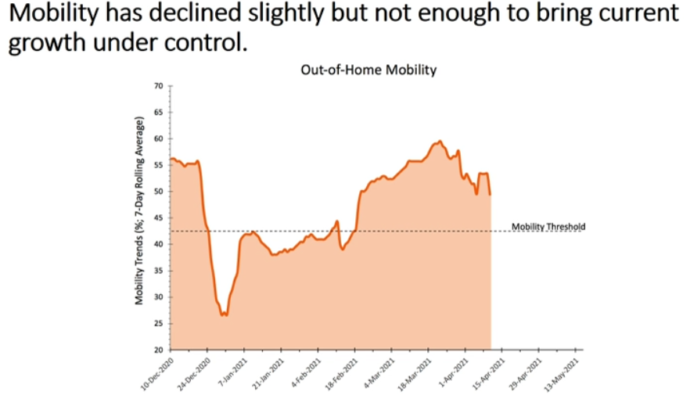 The challenge is to reduce the amount of mobility to below that threshold level. Individual decisions will make this happen. ▪
Limiting mobility:
This means restricting movement between regions of the province and restricting movement into the province. COVID-19 is not a single pandemic, because different regions of Ontario and Canada face distinct problems. Moving around the province risks creating new hotspots, especially because the variants of concern are so transmissible. Simply put, Ontarians need to stay in their local communities.
▪
Focusing on public health guidance that works:
This means Ontarians can’t gather indoors with people from outside their household (with the very limited exception of safe indoor work in essential workplaces). It means Ontarians can spend time with each other outdoors, distancing two metres, wearing masks, keeping hands clean.
Keeping people safely connected: Maintaining social connections and outdoor activity are important to our overall physical and mental health. This means allowing small groups of people from different households to meet outside with masking and two – metre distancing. It means keeping playgrounds open, and clearly encouraging safe outdoor activities.
What Won t Work
Policies that harm or neglect racialized, marginalized and other vulnerable populations will not be effective against a disease that already affects these groups disproportionately. For these reasons, pandemic policies should be examined through an equity lens to ensure that all communities benefit.
 Dr. Adelstein Brown; Chair of the Science Table As noted in repeated studies from around the world, inconsistent policies with no clear link to scientific evidence are ineffective in fighting COVID-19.
Policies that discourage safe outdoor activity will not control COVID19 and will disproportionately harm children and those who do not have access to their own green spaces, especially those living in crowded conditions.
There is no trade -of between economic, social and health priorities in the midst of a pandemic that is out of control. The fastest way back to work – and to all the other things that make life in Ontario great is to get this disease under control as quickly as we can together.

 By Staff By Staff
April 21st, 2 021
BURLINGTON, ON
 City Hall – where the bylaws get debated and set at what is permissible. How does your municipal government do it?
How do they create the rules that determine what you can do – what the city will be doing about different issues.
They read staff reports, debate amongst themselves and decide.
That decision is shown as a bylaw.
Yesterday Burlington city council passed the following bylaws:


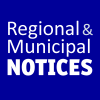 By Staff By Staff
April 21st, 2021
BURLINGTON, ON
Lane closures:
North Shore Blvd East, between QEW On-ramps, April 21 to December 2021
North Shore Blvd East, between QEW Toronto On-ramp and QEW Niagara On-ramp will have lane closures.
Wednesday, April 21 until December 2021
One lane in each direction and pedestrian access will stay open at all times.

 By Pepper Parr By Pepper Parr
April 20th, 2021
BURLINGTON, ON
While it was a virtual meeting of city council one could ‘feel’ the concern and the anguish as city staff and city council wrestled with the problems and the very limited tools they had to work with.
 What’s to understand – the facts were there for everyone to see – the province blew it in February and lives have been lost needlessly. Last Friday at 1:00 pm the Science Table gave its advice to the province’s Chief Medical Health Officer. Slides with data that was pretty easy to understand were used to make the points needed to support the recommendations.
At 4:00 on that Friday the Premier took to the podium and issued a Stay at Home order. He gave police the authority to stop people at random to ask where they lived and where they were going. He also ordered the closing of public parks – that particular order was not as clear as it should have been.
The scientists, there are 120 of them, all volunteers, gagged. The Stay at Home order was a small part of what they recommended.
The people close to the thinking that goes into the decisions that get made were aghast. The public didn’t know it at the time but many were giving serious consideration to resigning.
Burlington’s Mayor Meed Ward called an Emergency meeting of city council for Saturday to look at the options. Staff spent time Friday night and early Saturday morning pulling together data that set out what the provincial recommendations meant to the city.
Three hours of debate ended up with nothing concrete but did produce a list of questions that needed answers for the regular meeting of city council that was to take place today, Tuesday. Between the Friday and Tuesday there was a lot of public debate across the province over the closing of parks.
Mental health for all was in poor shape. There was fear, worry, concern and doubt. While Burlington didn’t have infection figures that were off the wall, the variants of the Covid19 virus were known to move around quickly and do much more damage than the virus we had to deal with when the pandemic was declared.
The public consensus seemed to be that the parks could be open for use and had to be open if people were to have a place to go and get some exercise.
 Ward 6 Councillor Angelo Bentivegna Ward 6 Councillor Angelo Bentivegna made the point rather well when he excitedly told his colleagues that he was flooded with phone calls – “people were stopping me on the street” he said and asking if the rule applied to football fields or the skate park. He added that there was no clear message and people were confused.
City manager Tim Commisso pointed out that people are asking why the outdoor amenities are closed – this puts us in a very difficult position. Executive Director Sheila Jones said “people are not willing to change their behaviour and we cannot enforce our way out of this”.
City Solicitor Nancy Shea Nicol pointed out that while many agree that some of the rules just didn’t make a lot of sense the fact is that the regulations are in place and until they are rescinded they are the law and have to be obeyed and enforced if necessary.
The city is required to take all steps necessary to ensure the health and safety of its citizens – actually doing that.
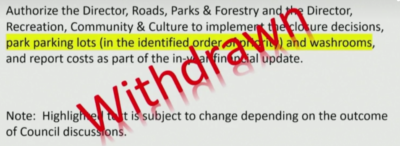 It looked pretty good at the Saturday Emergency of Council – by the time Council met on Tuesday it didn’t make any sense and was withdrawn. On Saturday the city council set out instructed that were in the form of a recommendation to the Tuesday council. They were withdrawn in a rather dramatic fashion with the displayed of a GET THIS.
The very clear lack of leadership from the province was evident when Mayor Meed Ward told Council there was supposed to be a virtual meeting with the Premiers and the Mayors from across the province (imagine trying to organize an event like that) on Wednesday but it had been moved to Friday.
There was a sense that everyone was waiting for better number as we worked our way through the week. The Tuesday numbers were below 4000 (3723)- he hope being that they would drip quickly allowing the Premier to declare that he was doing the right thing and all we had to do was wait it out.
That didn’t jive with what the Science Table said last Friday. Dr. Adelstein Brown said that the numbers for the next two weeks are “baked in”. The people who are going to end up in hospital acquired the virus a few days ago – and that it takes a bit of time for the disease to really hit a person.
 That was six feet – but that coffee shop isn’t open these days. Marianne Meed Ward in a coffee shop. During the Council meeting on Tuesday Mayor Meed Ward spotted a statement from the Science Table on-line that said it was important to keep people safe and connected and “allow small groups to meet outside wearing masks and remaining six feet apart. The science table was speaking over the head of the Premier.
“We need your help” said the Mayor, ” to be patient; we are all tired, frustrated and worried.”

 By Pepper Parr By Pepper Parr
April 20th, 2021
BURLINGTON, ON
Word from the Burlington Food Bank;
 Burlington Food Bank Executive Director Robin Bailey We are low for cereal right now which is unusual for us. What it comes down to is more people, families being supported while donations are dropping off.
If you’re planning to do some grocery shopping and can remember to grab a box of cereal for the food bank bin it’s much appreciated.
Our current top 10 are
- Canned Fruit
- Rice (1kg or 2kg sizes)
- Cereal
- Large Juice (1L Tetra or Cans)
- Juice Boxes
- Shampoo, Deodorant, Toothpaste and Toothbrushes
- Feminine Hygiene Products
- Peanut Butter
- Crackers
- Canned Meat (Ham, Turkey, Chicken)

 By Staff By Staff
April 20th, 2021
BURLINGTON, ON
 Those seniors who are 75 and over will see a 10% increase in the Old Age Security Benefits. It is often difficult to see something in a federal budget that impacts your pocket. Real dollars that you are going to receive directly – to your bank account if you are smart enough to use direct deposit.
The budget also proposes to increase Old Age Security by 10% for seniors 75 and over, beginning in 2022.
The current Old Age Security benefit maximum is: $615.37.
These just may be the Golden Years.

 By Staff By Staff
April 20th 2021
BURLINGTON, ON
Starting Tuesday, April 20, 2021, Ontario will offer the AstraZeneca COVID-19 vaccine to individuals aged 40 and over at pharmacy and primary care settings across the province.
In the media release the province announced: “As we continue to fight COVID-19, we are doing everything possible to get as many vaccines into arms as quickly and safely as possible. We continue to be actively engaged with Health Canada on updated AstraZeneca COVID-19 vaccine safety. Last week, based on the review of available data from Europe and United Kingdom, Health Canada announced that it was not restricting the use of AstraZeneca vaccine in any specific populations at this time.
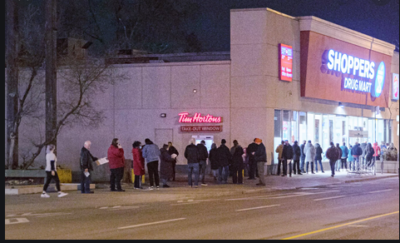 The line-ups are not that long. 40 and over are eligible for a vaccination. “By extending vaccination eligibility for the AstraZeneca COVID-19 vaccine at pharmacies and primary care settings to individuals aged 40 and over, Ontario will be able to offer the protection of the vaccine to more Ontarians earlier than anticipated. With supply of AstraZeneca available at this time, the expansion of eligibility will also significantly increase access to vaccines in hot spot communities.
“The health and safety of Ontarians is always our top priority, and for that reason, only COVID-19 vaccines that Health Canada determines to be safe and effective are approved for use in Ontario. All COVID-19 vaccines available in Ontario have been shown to prevent serious illness, hospitalization and death. Adverse reactions are extremely rare. We strongly recommend that everyone book their appointment as soon as they are eligible.
“Ontario has administered over 3.86 million doses of the vaccine to Ontarians to date, and all of our partners and health care workers are continuing to work hard to administer doses as quickly as possible to Ontarians.”

 By Andrew Drummond By Andrew Drummond
April 20th, 2021
BURLINGTON,, ON
Monday morning the Ford government again voted down an NDP motion to introduce paid sick days to Ontario.
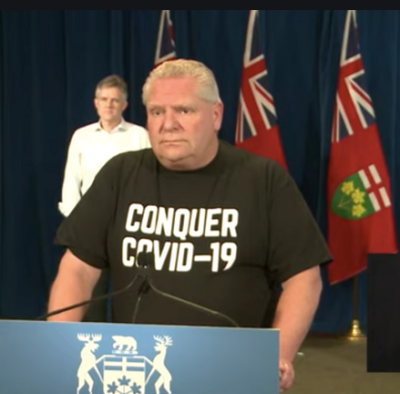 Difficult to say that we are actually conquering the virus. Ford and the Conservatives have been consistent in opposing any implementation of paid sick days with their most common excuse being that it would conflict with existing federal programs. However, despite this, paid sick days has been a key recommendation from many groups to fight the COVID pandemic. Ontario’s associate chief medical officer of health, Dr. Barbara Yaffe; The Ontario Medical Association and the Ontario Hospital Association are among those beyond the NDP who have consistently called for this to be a primary measure in Ontario’s fight against COVID, and the lack of its implementation is a key reason Ontario has fallen behind in this fight.
As of April 18, there have been more than 21,000 COVID-19 cases directly attributable to workplace outbreaks according to the Ontario government’s data (Likely source of infection | COVID-19 (coronavirus) in Ontario). That is in addition to the massive but difficult to quantify numbers of people who have been infected with COVID-19 from caretakers or other health employees.
Throughout this pandemic, workers have been going to work sick because they have no other reasonable choice. Until that is stopped, Ontario will still be at risk.
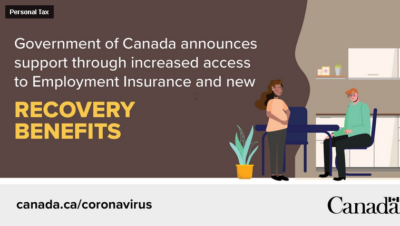 The most common excuse the Ford government has given for why they won’t implement a paid sick leave policy is that is conflicts with the federal government’s Canada Sickness Recovery Benefit (CSRB). Ford has repeatedly referenced this program. “There’s paid sick leave from the federal government,” Ford said on April 7. However, there are many differences between the CSRB and a mandatory sick leave policy and showing the details of the limitations of CSRB, helps to understand why it hasn’t been enough to slow workplace outbreaks. The most common excuse the Ford government has given for why they won’t implement a paid sick leave policy is that is conflicts with the federal government’s Canada Sickness Recovery Benefit (CSRB). Ford has repeatedly referenced this program. “There’s paid sick leave from the federal government,” Ford said on April 7. However, there are many differences between the CSRB and a mandatory sick leave policy and showing the details of the limitations of CSRB, helps to understand why it hasn’t been enough to slow workplace outbreaks.
The first major limitation with CSRB is that it is only paid out if a person actually has COVID or is isolating because a close contact does. You do not get any payments if you were sick for any other reason. So, if you have a cough and are having trouble breathing, you need to get a COVID test. However, you also must still go to work in the meantime, and you are not eligible for CSRB unless that test comes back positive. This obviously doesn’t help people stay home the first day they are symptomatic, which will also be the time where they are most likely to communicate it to others. This limitation alone makes it unlikely that CSRB is doing anything to reduce the spread of COVID in Ontario.
The second major limitation is that CSRB doesn’t provide any job protection. If you are a worker in a factory or warehouse and you catch COVID, CSRB will give you 2 weeks of income. However, your employer can still fire you for not showing up to work. For anyone whose employment is precarious, this is an obvious dealbreaker. It doesn’t matter if that worker gets 2 weeks pay, they are still without a job in an economy that isn’t doing well. If a worker must choose between trying to hide their illness or losing their job, many will choose to try and save their job. In some of those cases, it leads the rest of the workplace to get sick.
The third limitation of CSRB is the logistics of receiving the credit. There are two major technical limitations. First, the benefit only pays out in full weeks. You cannot get the benefit for any part of a week (since all COVID cases would require multiple full week’s isolation). Secondly, a worker won’t receive any money until 4 weeks after they have applied as the government processes the claim. This means that anyone living paycheque to paycheque will have no ability to get the money they need for rent or food because their income would be delayed for 4 weeks. Another reason that precariously employed workers can’t take time off and depend on this program.
Ontario at one time was a province that had mandated sick leave for all workers. It was only 2 days per year, but it offered some protection. However, Ford’s government removed those days in 2018 when they took office. Since that time, the pandemic has made clear what a disastrous mistake that was. Hopefully with all the public pressure being put on the government by Andrea Horwath, the NDP, and various community and medical groups, Ford will relent to the expert’s advice and bring in a long overdue program to ensure that we reduce the number of workplace outbreaks in the future.
Andrew Drummond was the NDP candidate in the last provincial election.

 By Staff By Staff
April 20th, 2021
BURLINGTON, ON
An interim urban farm is popping up at the North-West corner of Brant Street and Ghent Avenue with support from the Molinaro Group that owns the land and has plans for a major development in the future.
 Bales of straw have been placed on the property -not explanation as to why – yet COVID-19 is estimated to have dramatically increased the number of people facing acute food insecurity in 2020-2021 both locally and globally.
This project is making impactful change by opening up new and innovative sources of food that can help reduce the stressful experience of food insecurity while also mitigating the effects physical and social isolation. The unique approach of this project focuses on the collective experience towards enhancing the quality of life for local community members.
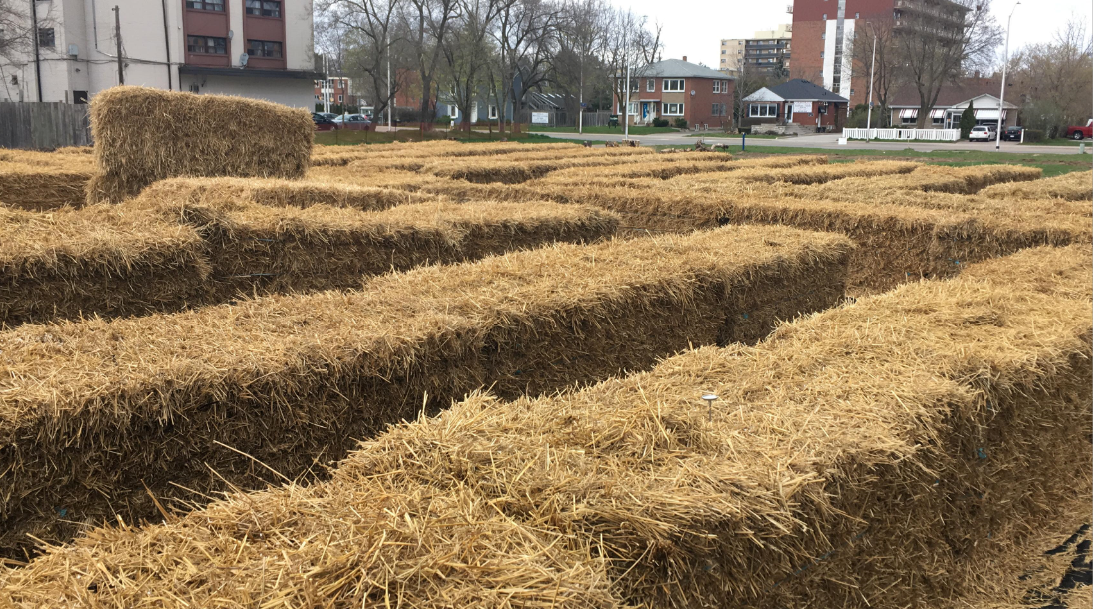 Looks more like a maze than a farm – let’s give it some time and see how things work out. Burlington’s Grow for Change Urban Farm will be in operation for approximately two years across spring to late fall growing seasons. The volunteer based not-for-profit group will promote a truly multi-purpose urban farm, focused on growing food for local food security organizations, expanding community connections and promoting the many health impacts this initiative will deliver. Remote participation is encouraged through providing video and social media updates as the urban farm develops while keeping the community informed.
As a collaborative and engaging project local participation is encouraged. A call out for volunteers and operations sponsors is underway. Opportunities include: administration, general labour, planting and horticulture, education and general maintenance. To maintain physical distancing and an organized approach to volunteering scheduled shifts will be required, for clarity, the project is not managed as individual growing plots at this time. Interested parties are invited to contact row4changes@gmail.com.
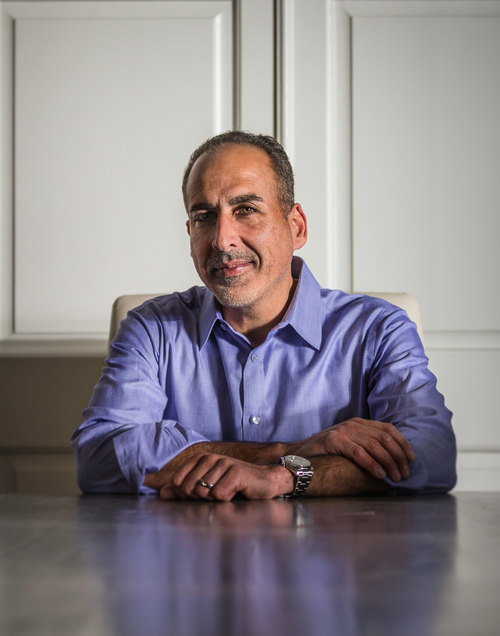 Vince Molinaro Vince Molinaro, President Molinaro Group explains: “When we were asked to be part of this initiative we said yes without even hearing all the details! The Urban Farm touched on all of our ideals and values including our love of our families, community and the environment. We all have our own gardens at home and can’t wait to share our own ideas with the group”.
Lisa Kearns, City Councillor Ward 2 adds: “Food security is a very real issue in Ward 2 and this progressive approach will help provide nutrition to our most vulnerable. I welcome the collaboration between a private development group and a local volunteer group to strengthen the bonds of community. A truly great opportunity to get involved in a safe and purposeful way.”

To follow the Grow for Change Urban Farm’s progress:
Email Grow4Changes@Gmail.com
Facebook @i.will.grow.for.change
Twitter @G4C_UrbanFarm
Instagram @Grow4ChangeBurl

 By Staff By Staff
April 20th, 2021
BURLINGTON, ON
It might become the next big thing your city Council takes on.
The concept has merit and there is certainly a need.
It is going to take a number of bright people to think their way through this challenge.
 Coming up with a way to create housing that people can afford to buy or rent – the name given to this is “attainable” housing. Coming up with a way to create housing that people can afford to buy or rent – the name given to this is “attainable” housing.
The City needs a Working Group to support the Housing Strategy. They are looking for a diverse group of volunteers from government, not for profit, co-op, businesses and residents.
If you are interested in applying, fill out the form below. More details about the role of the Working Group will be available in the draft Engagement Plan that will be presented to CPRM Committee in April and that will be posted on the project page on getinvolvedburlington.ca/housingstrategy.
Space on the working group is limited to 20 people. There will be multiple opportunities to engage throughout the Housing Strategy Project. Stay tuned for additional opportunities to get involved in the Housing Strategy in the upcoming draft engagement plan.
Applications will be open until 11:59 p.m. on April 30, 2021. CLICK HERE to get the application form

 By Staff By Staff
April 19th, 2021
BURLINGTON,, ON
Local new is our focus but from time to time we drift and include background on a bigger picture.
As the next new normal expected after the pandemic takes shape, this week’s MIT Sloan CIO Symposium examined how the workplace might change yet again in the coming months.
MIT is the Massachusetts Institute of Technology; the Sloan School of Management is part of MIt.
While many organizations continue to maintain remote operations, a foreseeable end to the COVID-19 pandemic means there is a very real prospect for bringing at least part of the workforce back to the office. A discussion on the future of work, moderated by Allan Tate, executive chair of the MIT Sloan CIO Symposium, drew upon earlier event sessions as well as findings presented by Irving Wladawsky-Berger, research affiliate at MIT’s Sloan School of Management, and a fellow of MIT’s Initiative on the digital economy and of MIT Connection Science.
Wladawsky-Berger said MIT’s future of work task force found that the momentum of innovation nurtured these changes alongside the circumstances that accelerated remote work. “Technology is simultaneously replacing existing work and creating new work,” he said. “That has always happened through the history of technology.”
 Remember when – this was it? When brand-new technology appears, Wladawsky-Berger said there can be widespread excitement, but it can still take time before the deeper effects are felt. This was seen with the advent of the internet in the mid-1990s and rise of smartphones in later years. “It really takes a while for the technologies to deploy at scale, and it’s only when they deploy at scale that it starts having a really impact on jobs and the workplace,” he said. “That takes time, often decades.”
That impact can have significant repercussions on the human element. “One of the biggest problems of the last four decades, while technologies raised productivity, the productivity has not translated into increasing income for many workers,” Wladawsky-Berger said. Automation has left many workers behind, he said, and globalization made it easy to transplant jobs to countries that were less expensive.
“People with less of a college education are the ones who paid the biggest price for the changes that have happened, and that has led to the rise in inequality,” Wladawsky-Berger said. That compares with people who possess at least a college education who tend to continue to do well with job prospects that continue to grow, he said, along with salaries. Wladawsky-Berger said this trend has led to many middle-class individuals and families taking the brunt of the widening disparity.
 The acceptance of new technology has followed new ideas – but not always that closely. As evolving technology affects the workplace, he said there is also a need for new thinking from policymakers. “For the last 40 years, our labor market institutions and government policies did not adjust to the realities of the digital economy,” Wladawsky-Berger said. “The view has been that the market will take care of all problems and government should do as little as possible — that doesn’t always work.”
There has been some change on this front, he said, but MIT’s report argues that with better policies in place, more people could explore career opportunities as new technology transforms the nature of work.
Governments around the world are starting to adopt this way of thinking, Wladawsky-Berger said. “Innovation is what got the US to its preeminent position, especially post-World War II,” he said. That included investments in infrastructure, interstate highways, and the work of the Defense Advanced Research Projects Agency. In spite of gains made on those fronts, Wladawsky-Berger said such efforts scaled back over time. “A lot of investments in R&D and innovation have been going way down in the intervening decades,” he said. “We must do more to cultivate new jobs and new worker skills.”
It’s difficult to stop supply chain attacks if partner accounts are compromised. What can you do when these attacks are indistinguishable from insider threats?
 Are Zoom Rooms going to become a permanent part of the office? While there have been conversations about the hybrid workplace representing the future, there are also new considerations that can come into play. “We have a very clear model for remote work and a clear model for office work, but a hybrid creates a problem,” Tate said. For example, if part of the team on a video call is together in a conference room, he said they might have side discussions after the call that the others are not privy to. Tate suggested guidelines need to be introduced to address these changes to the workplace.
The future of work might be hybrid, but it can have a profound effect on recent hires who have not formed bonds with co-workers in-person. “It is a huge difference applying remote work to somebody that just joined the office than to people who have been working with each other the last 20 years,” Wladawsky-Berger said. Colleagues who were familiar with each other prior to the pandemic can already have memories of interacting with their co-workers, he said, which can be a different experience than with a recent hire. “We have to learn over the next five to 10 years what works and doesn’t work,” Wladawsky-Berger said.

 By Pepper Parr By Pepper Parr
April 19th, 2021
BURLINGTON, ON
There are a lot of people very unhappy with the Premier.
 Dr. Adelstein Brown, Chair of the Science Table , keeps a safe distance from Dr. David Williams, Chief Medical Officer of Health. Members of the Science table who advise the Chief Medical Officer of the province who then advises the Premier are talking about resigning.
They don’t think the Premier understands the gravity of the Covid19 situation and how close we are to being out of control.
Leader of the provincial Liberals want the Premier to resign – Stephen Del Duca said: ““Doug Ford is the worst Premier in Ontario history at a time when leadership matters the most. He should resign now before he makes things any worse. If he does, I will be the first to commend him, because it takes real guts to get out of the way when he’s screwed up this badly. But he won’t. Because he only cares about himself and his special friends.”
That’s just politics – Del Duca has yet to win a seat to even sit in the Legislature.k
It is becoming very clear that this government cannot seem to get ahead of the crisis. Paid sick leave for those people who have the crummy jobs, live with large families, often in congested space, work for a bit more than the minimum wage and having to use public transit doesn’t seem to be something the province is prepared to do.
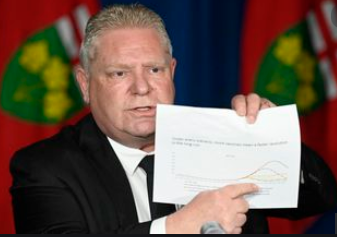 Premier Ford uses data provided by the Science Table as a prop during a media event – but doesn’t follow the recommendations that came with the data. Money can’t be the issue – the Premier keeps saying “whatever it takes”. It takes taking care of the people who work in the hospitals who are approaching burn out, the single parent who works in the supermarket and now has to figure out how she is going to care for her children with schools closed.
The decision to give police the authority to stop people at random and have them justify why they are out of their homes was a stretch when the public was informed – then at least 30 police forces in the province declare they aren’t going to use the authority – the province backs off.
There is a health crisis that is barely under control.
There is a confidence problem as well.

 By Pepper Parr By Pepper Parr
April 19th, 2021
BURLINGTON, ON
 It was a City Council meeting called by the Mayor for 10 am on a Saturday morning. The first Saturday morning Council meeting this reporter recalls in the ten years I have been covering council. It was a City Council meeting called by the Mayor for 10 am on a Saturday morning. The first Saturday morning Council meeting this reporter recalls in the ten years I have been covering council.
There were no desperate holiday weekend meetings in 2014 the parts of the city were flooded.
That State of Emergency means that an Emergency Control Group (ECG) runs the city but must defer to Council when there is a change to the level of service delivery or when there is a need for additional funds that were not part of the budget Council has approved.
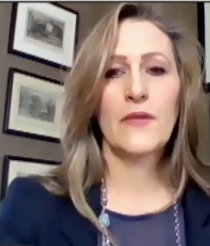 Mayor Marianne Meed Ward There was no agenda, other than the audio visual technician there was no one in the Council Chamber. The Mayor, members of Council and city staff taking part were all working from their homes.
There was one item to be considered and that had to do with parking in the areas around the public parks and the use of public washrooms.
Three hours after the Mayor called the meeting to order and confirmed that there was a quorum they adjourned with the “matter to be considered” referred to a scheduled city council meeting to take place on Tuesday evening.
Mayor Meed Ward explained that the meeting was critical and was called because of the impact provincial orders were having on the city’s responsibility to provide services.
Executive Director Sheila Jones, who oversees any changes that are made to the level of service delivery, set out what the issues were and expecting that Council would go along with the following:

The City was working on the understanding that the province had said parks were to be closed. The province later modified that decision but council didn’t know this while it was meeting on Saturday.
People want and need to get out side for exercise and do something for their mental health. Burlington has 130 parks – Council wants people to walk to the local park and have the children play in a local park rather than have everyone heading for the Beachway or Spencer Smith Park.
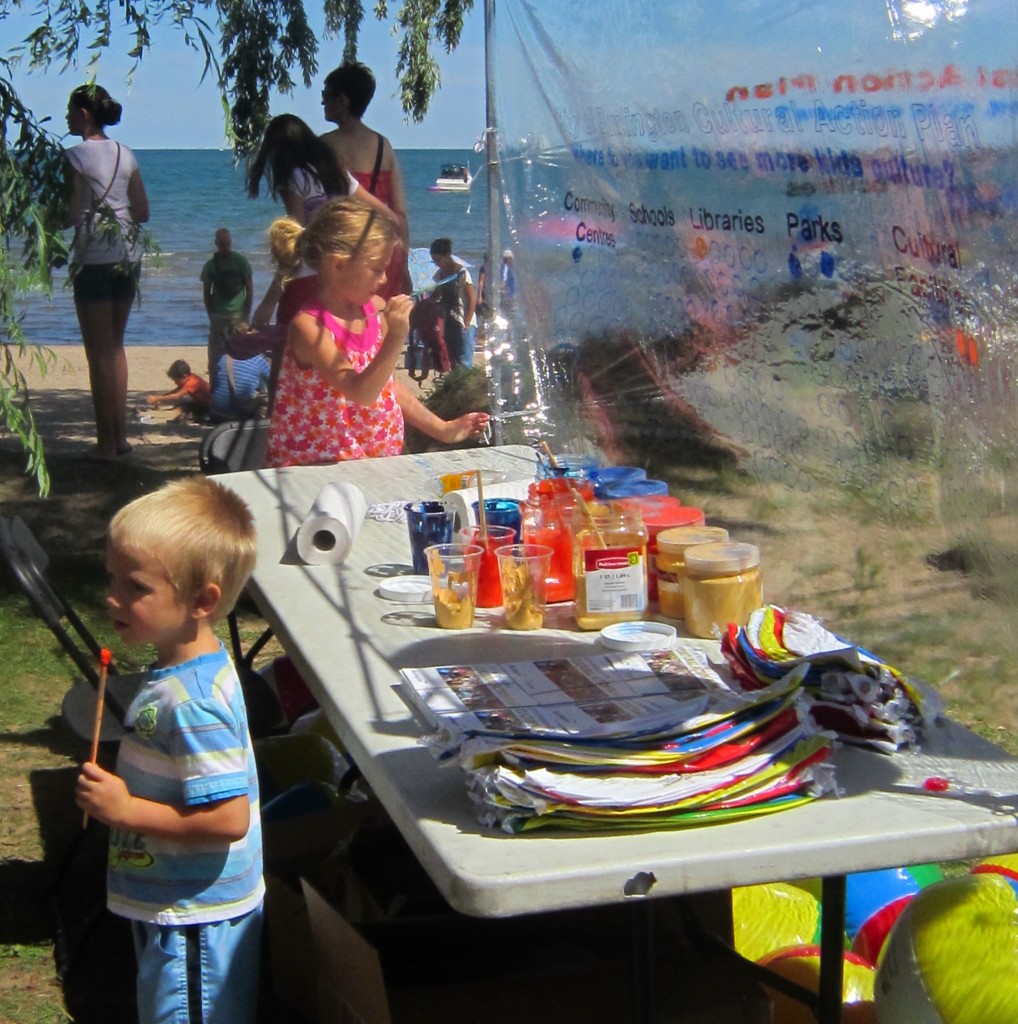 Parents are going to want to be outside when the weather gets warmer. Everyone, well almost everyone, understands that we are in a crisis – and yet for the people of Burlington we are not seeing a crisis. We don’t have the concentrations of populations that exist in the Peel Region, Brantford and Toronto.
The Parks and Recreation people are doing an admirable job at reacting to an ever-changing scenario. They need time to make the changes and at the same time coping with a public that wants their children to be able to play out doors.
The provincial decision to forbid golf courses to operate had the parks people scrambling to get concrete barriers in place to prevent people from getting on the gold courses – the Tayandaga course was sold out for Saturday.
The numbers are daunting – 1200 case levels being reported at the end of February – 4800 0n Saturday and 7500 at best in six weeks.
When the province makes policy decisions – they are followed by very detailed regulations. On Saturday all the city had were draft regulations – which City Solicitor Nancy Shea Nicol explained do get changed.
As a process that was understandable – the problem for senior staff was – how do we deal with real situations that are going to have to deal wit the next day.
City manager Tim Commisso said that city park use is going to have to be regulated adding that there is “no possible way to enforce rules in recreational parks”. The focus will be on educating people.
 Skate Park in the Alton community will be closed. Director of Parks and Recreation Chris Glenn had to close down skate board facilities, basket ball courts and tennis courts. And trying to figure out if the leash free parks could be kept open.
Could picnic tables be used, boats can apparently be put in the water but people couldn’t take the boats out on the water – figure that one out!
Community gardens were thought to be Ok.
The recreational space at schools is a school responsibility.
The Bylaw enforcement people have seen a 200% rise in complaints – their challenge is to keep problems from becoming confrontational.
The city is having some difficulty with the form of communication with the Public Health Unit. Local doctors are giving advice that the city likes but would like to see that advice confirmed by the Public Health people. Council Sharman has the Mayor talking to the doctors at Joseph Brant asking if they would put their advice in writing.
Mayor Meed Ward said she was just not hearing from the Health people at the Region.
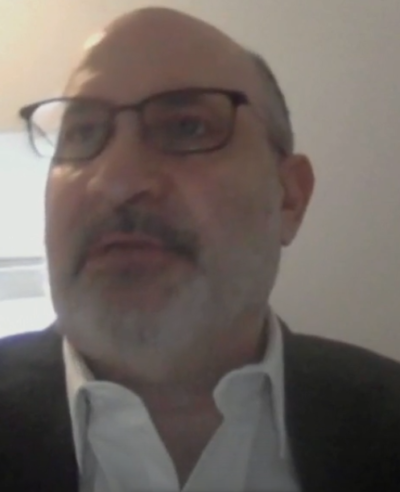 City manager Tim Commisso – the public needs directions. City Manager Commisso said the “public is waiting to be told and if the are not told what they can do – they will do what they think is best for them if they do not get clear instructions from the elected leadership”.
The pressure is being felt by everyone at every level.
There were a lot of comments – but the issue in front of Staff was what do we do with public washrooms and parking lots at the public parks. Of the 130 parks – 35 have parking lots. Do we board up those parking lots and do we open the public washrooms?

Park use – how to manage a situation where the rules are not clear.
If the decision is to implement the closure of parks (which is now not going to happen) – the province changed their minds) there was a priority list created.

Council agreed that there were risks in deferring a decision to Tuesday – but there just wasn’t enough information – and the concern was that the province would change some of the decisions they had made.
Commisso said the “fear is that the parks situation will only get busier and that means the risks will get higher making it difficult to manage when the weather gets warmer.”
After a two hour and fifty minute meeting the decision was to:
Refer the closure of the park parking lots and park washrooms to the Director of Roads, Parks and Forestry and the Director of Recreation, Community and Culture to report back to the April 20, 2021 council meeting with a recommendation.
Before getting away Sheila Jones reminded Council that street parking rules have been lifted (for now) and transit has not changed.
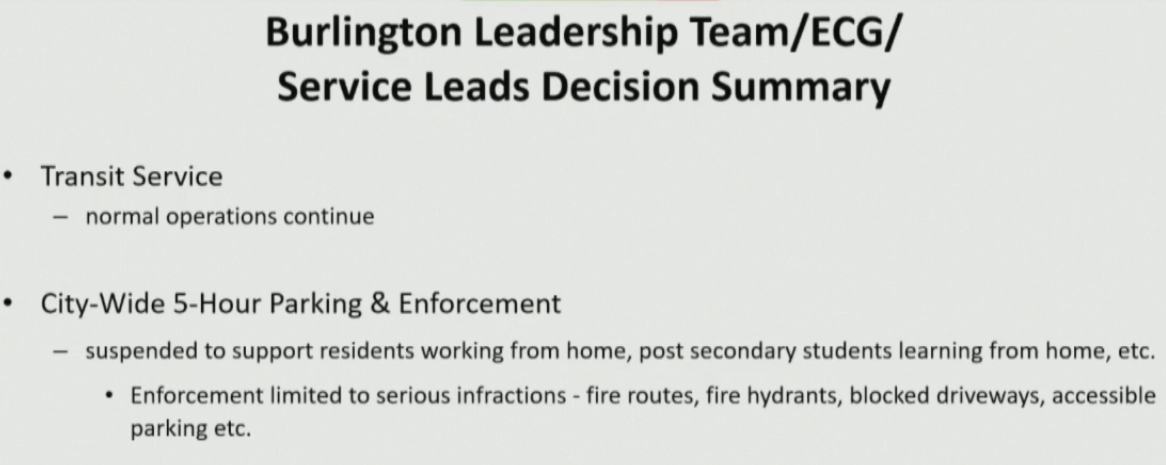 These decisions get recommended by the city leadership team and approved by the Emergency Coordinating Group who then inform council With that the the Mayor moved into an Emergency Control Group meeting – the rest waived their hands for the camera and went back to figuring our what had actually been achieved.
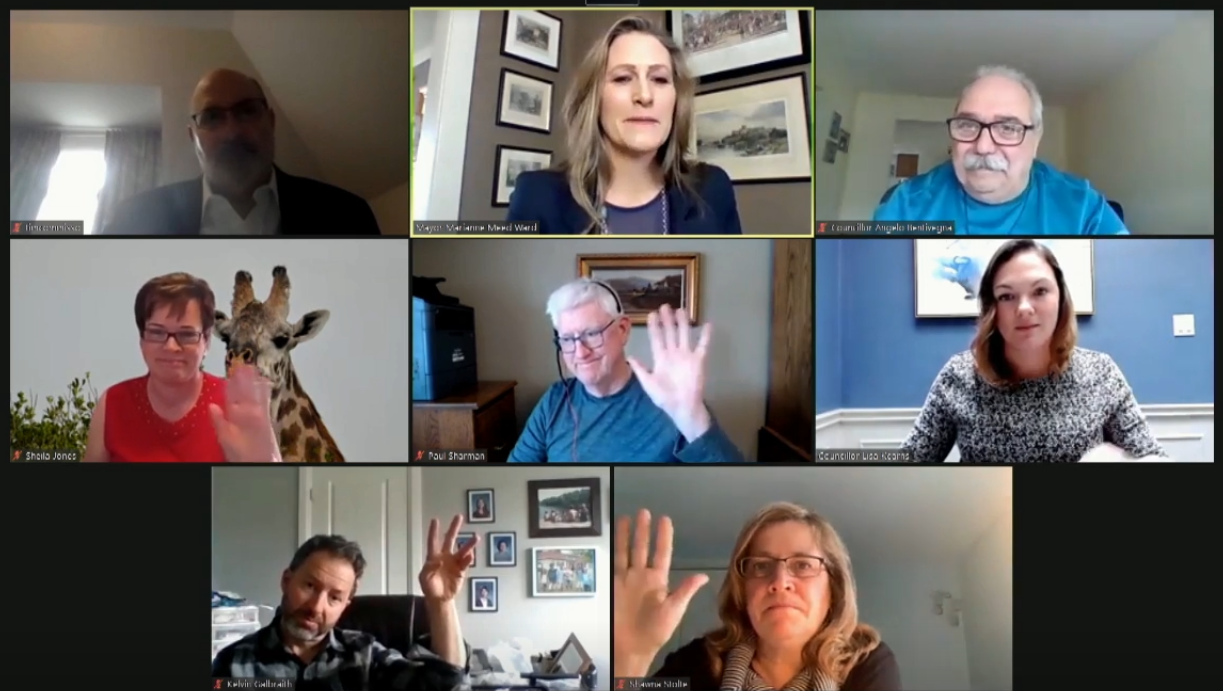 Waving goodbye after a three hour meeting. 

 By Staff By Staff
April 18th, 2021
BURLINGTON, ON
When the Ministry of Education announced that students would return to on-line learning when the Spring Break ended on April 19th, thousands of parents who are part of the front line that keeps the wheels moving suddenly had to find support in finding some way to care for their children and keep them in school at the same time.
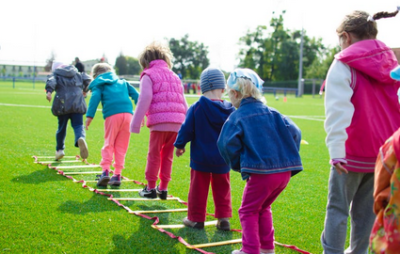 In today’s environment these children would be wearing masks. The Region is working at getting the help needed by the frontline workers. In response to the Province’s announcement and decision to move all Ontario students to remote learning following the April break, Halton Region has partnered with the Ministry of Education and select operators in Burlington, Georgetown, Milton and Oakville to provide emergency child care services.
The spaces will be available full day starting Monday, April 19 for eligible health care and frontline workers with children aged four to 12 who are registered for school in Halton.
“Our health care and frontline workers continue to make significant sacrifices to respond to the pandemic and keep our community safe, “said Halton Regional Chair Gary Carr. “We will keep doing whatever it takes to make sure that these critical workers are supported throughout this time. I want to thank our Children Services team, the Province and all of our partners for working to ensure that these workers have access to child care services while elementary schools are closed to in-person learning.”
The targeted emergency child care spaces are fully funded by the Province to eligible health care and frontline workers who may not be able to support their child(ren)’s learning/care at home and who have no other child care alternatives. Child care for infants up to four years of age will remain open.
 The people working retail and those working in the medical sector need help. The Region is supplying whatever space they can find. Will it b enough? To apply for emergency child care, eligible workers are asked to contact one of the approved emergency child care operators directly. If you have previously applied for targeted emergency child care you will need to reapply. Spaces are limited and will be filled in order of the applications received.
Halton Region Public Health is working closely with the Ministry of Education to open these child care spaces and are taking extra measures to maintain a safe and healthy environment, including daily screening of children and staff and regular cleaning and disinfecting of frequently touched objects and surfaces.
For more details on targeted emergency child care, eligibility criteria and to view the list of approved emergency child care operators in Halton, please visit our Child care Services webpage or call 311.
The link to that page on the Regional web site is HERE

 By Ray Rivers By Ray Rivers
April 18th, 2021
BURLINGTON, ON
OPINION
When you are wrong, you are wrong. The adult thing to do is to just admit it. The debate on carbon taxation is over and Mr. O’Toole has his job cut out educating those dinosaurs in his party who couldn’t even concede that climate change is real.
 With O’Toole’s ‘green’ rewards, the more often you fill up your car the more more points you earn. Everyone had been expecting to see his long promised Tory environment policy, ‘Secure the Environment’. But no one expected O’Toole to include a carbon tax, after all the criticism he had heaped on that idea.
Perhaps that is why O’Toole’s tax actually resembles a loyalty card, a kind of Petro-Point collector. Though since it is mandatory, it’s still a tax, something he doesn’t get. And he clearly also doesn’t understand that the incentive should be to reduce green house gas emissions. With O’Toole’s ‘green’ rewards, the more often you fill up your car the more more points you earn. And those points in your personal low carbon saving account entitle you to a ‘green’ prize of the government’s choosing – rather than a guaranteed fixed rebate on your taxes each year.
Some environmental groups have lauded O’Toole though they note that the bar for him to jump was pretty low. And this may all seem like heady stuff for the Tories, but his environmental plan reads like something the Liberals might have written a couple of decades ago – before we all wasted so much time talking about climate change instead of doing something about it.
Setting a goal of 30% for electric vehicles (EV) sales by 2030, may sound new age, but 30% pales when compared to Quebec’s decision to ban all gasoline car sales by 2035. And the Tory policy document offers no real plan on how to get there.
For a party which sells itself as a tax fighter and calls out its opponents as big taxers and spenders, fiscal conservatives will be holding their noses on election day. There are new taxes proposed for luxury vehicles, frequent flyers and even second homes, in addition to the new carbon tax. It is no wonder that the folks at the Taxpayers Federation are going ballistic, calling O’Toole out for breaking his promises.
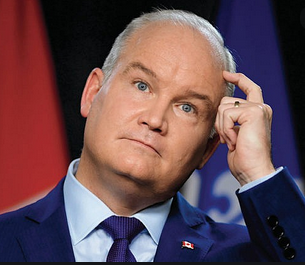 Another billion for car battery development, another billion for hydrogen power from natural gas and five more billion for carbon capture and sequestration And there are billions of dollars in new spending thrown in, as if the traditional Tory pre-occupation with debt no longer matters. There is a billion promised to develop mini nuclear power plants, another billion for car battery development, another billion for hydrogen power from natural gas and five more billion for carbon capture and sequestration – which involves pumping oil sands emissions into the ground and praying they will stay there.
O’Toole has borrowed from Andrew Scheer’s environment playbook, promising more natural gas exports to other countries to help them reduce their coal burning, whether they want it or not. And that probably would lead to more discussion of new pipelines. Interestingly he has backtracked on his party’s opposition to the Liberal’s low carbon fuel standard much as he has now accepted federal carbon pricing for industrial polluters.
There is a brief mention of ‘carbon border trade tariffs’ to level the field for Canadian companies competing against producers in other countries with less constraining environmental standards. This is something the Biden administration is also considering, though it’s an uphill battle against the free trade lobby. Still O’Toole is only committing to study the idea.
While O’Toole talks about increased energy supply he ignores the lowest cost option, the lowest hanging fruit – renewable energy. The Biden administration, south of the border, is banking on wind and solar to drastically shave US carbon emissions. Driving electric or hydrogen powered vehicles will not get Canada to its carbon goals if the electricity that charges/powers them comes largely from carbon based fuels.
 O’Toole’s proposed carbon tax is seriously flawed and may actually lead to increased carbon emissions, rather than reduce them O’Toole understands that the party he leads is out of step with the majority of Canadians, even in Alberta, who expect the country to deal with its pollution and meet its international climate goals. ‘Secure the Environment’ was intended to correct that imbalance. Unfortunately the plan is still too ideologically driven and still too overly consumed with a dying resource sector.
O’Toole’s proposed carbon tax is seriously flawed and may actually lead to increased carbon emissions, rather than reduce them. Further, his decision to introduce his own carbon tax and claim that it isn’t a tax, is shameful behaviour for someone aspiring to Canada’s highest office.
Why not just admit he’s changed his mind and now accepts the existing carbon tax framework, much like he has done for the industrial polluters. And why not confirm the reality that the carbon tax has neither proven a drag on the economy, nor overly hurt working Canadians. Otherwise he wouldn’t be promoting carbon taxation, even if by another name.
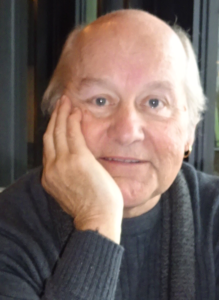 Ray Rivers writes weekly on both federal and provincial politics, applying his more than 25 years as a federal bureaucrat to his thinking. Rivers was a candidate for provincial office in Burlington where he ran against Cam Jackson in 1995, the year Mike Harris and the Common Sense Revolution swept the province. Ray Rivers writes weekly on both federal and provincial politics, applying his more than 25 years as a federal bureaucrat to his thinking. Rivers was a candidate for provincial office in Burlington where he ran against Cam Jackson in 1995, the year Mike Harris and the Common Sense Revolution swept the province.
Background links:
Secure the Environment – Loyalty Cards – Worst of Both –

 By Staff By Staff
April 17th, 2021
BURLINGTON, ON
A statement from the Regional Police sets out how they plan to respond to the decisions made on Friday by the provincial government.
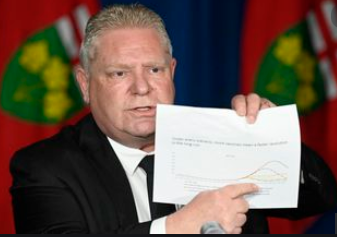 Premier Doug Ford referring to data prepared by the Science \table during his media event on Friday. On April 16, 2021, the Government of Ontario announced new restrictions, including a two-week extension of the current province-wide shutdown, in order to curb the concerning transmission rates of COVID-19. The Stay-at-Home order requires everyone to remain home except for essential travel such as grocery and pharmacy needs, health care services, outdoor exercise, and work.
The Government of Ontario also announced enhanced enforcement measures for provincial offences officers, including police officers, under the Emergency Management and Civil Protection Act (EMCPA).
The Halton Regional Police Service is reviewing the new regulations. At this time, our current enforcement response will remain the same, with a focus on the 4 Es:
• Engage
• Explain
• Educate
• Enforce
We will continue to work with our Municipal By-law partners and Public Health officials to respond to complaints and support proactive efforts to raise awareness. Our focus will remain on education and using enforcement only as a last resort.
We would like to reassure our community that our officers will not be conducting random stops of vehicles or individuals.
With the healthcare system at critical capacity, the Halton Regional Police Service continues to urge residents to take personal responsibility to follow all restrictions to limit the spread of the deadly COVID-19 virus.
Let’s do this, Halton. Continue to be kind to one another. Many people are struggling with the duration of these restrictions and are very isolated. Ask people how they are doing. Then, ask them how they are really doing. A list of mental health supports and resources is available here.
As a final note, on behalf of every member of our Service, we extend our thanks to all essential workers and the frontline healthcare heroes of Ontario who are risking their lives every day to protect us all.
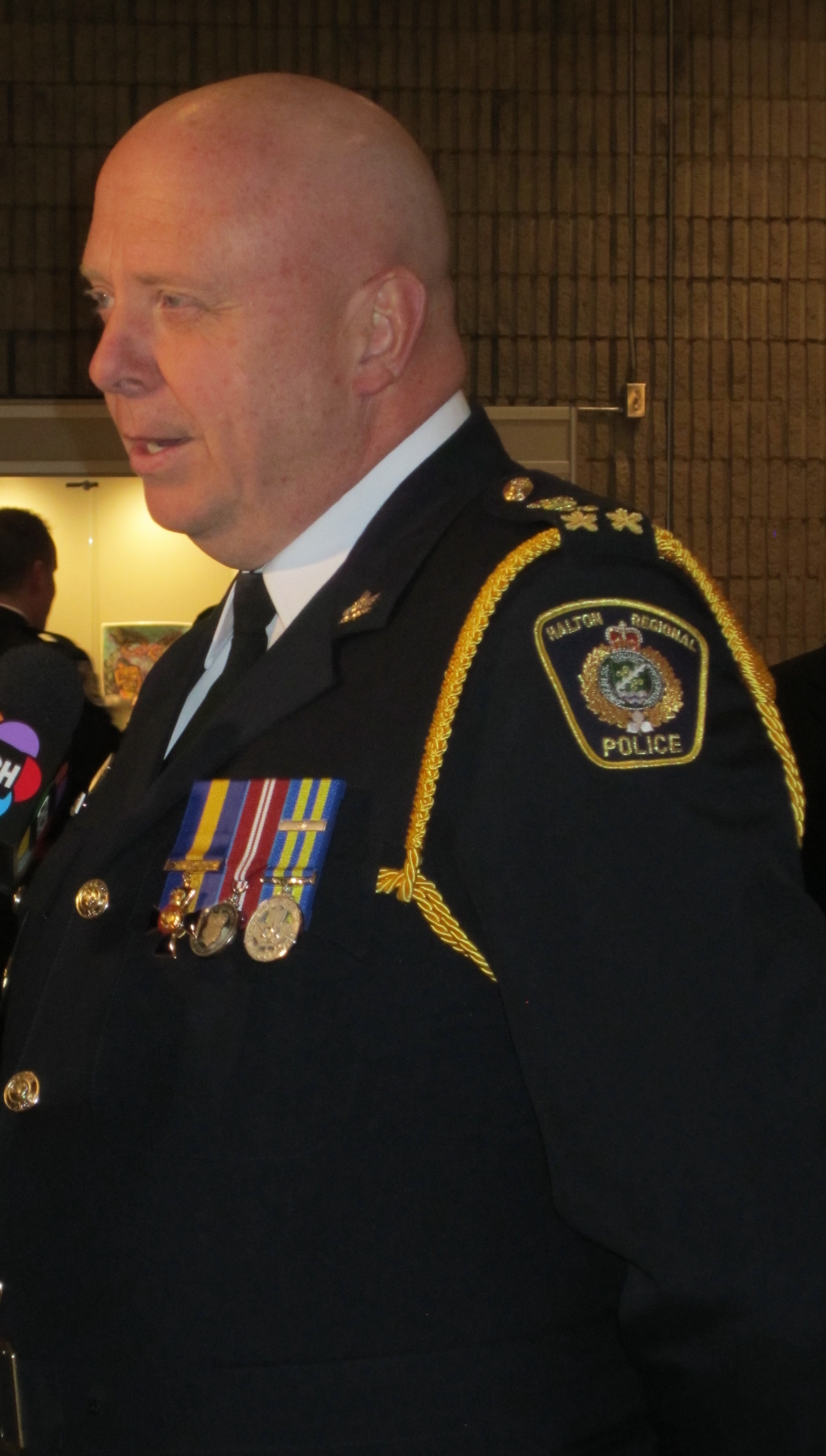 Halton Regional Police Chief Stephen Tanner Chief Stephen Tanner added a personal note: “We will always be committed to the safety, protection and security of the entire community.
It is my hope and expectation that our officers will not be put in the position of having to use enforcement as a mechanism to achieve what should occur through voluntary compliance. That is why we are committed to engage, explain and educate our public and we will resort to enforcement only as a last resort.
We will not be stopping vehicles or individuals randomly but will respond as required and when necessary. It is my hope that our citizens will continue to work cooperatively with us and with all levels of government throughout the weeks and months ahead.”

 By Pepper Parr By Pepper Parr
April 17th, 2021
BURLINGTON, ON
One of a series of articles on the Science Table data that led to the decisions the Premier made to limit mobility.
Is there anything that can be done to change these numbers asked a reporter at the Science Table media event Friday afternoon.
The answer from Dr. David Williams was a one word stark answer: N0
His colleague Dr. Adelstein Brown added that “those numbers are baked in”
 The hospitals do not have the capacity currently to care for the number of people that need intensive care. The Premier has said 700 to 1000 beds are being added – most as field hospitals. The reference was to the number of people currently in intensive care. We know now roughly how many of those people will die.
One reporter wanted to know: Is this the disaster that was expected if the province relented back in February?
We did relent back in February and this is what we have to show for it responded Dr. Williams.
There was a choice to be made between economics and public health.
 Dr. Adelstein Brown, on the left is head of the Science Table. Dr. Williams is the Chief Medical Officer for the province. His role is to advise the politicians. The sudden appearance of particularly contagious variants of Covid made a tough situation much worse.
It can get a lot worse added Dr. Williams who was on the media event with Dr. Adelstein Brown.
Brown heads up the Science Table while Williams is the Chief Medical Officer for the province.
The data presented shows clearly where the mistakes were made.
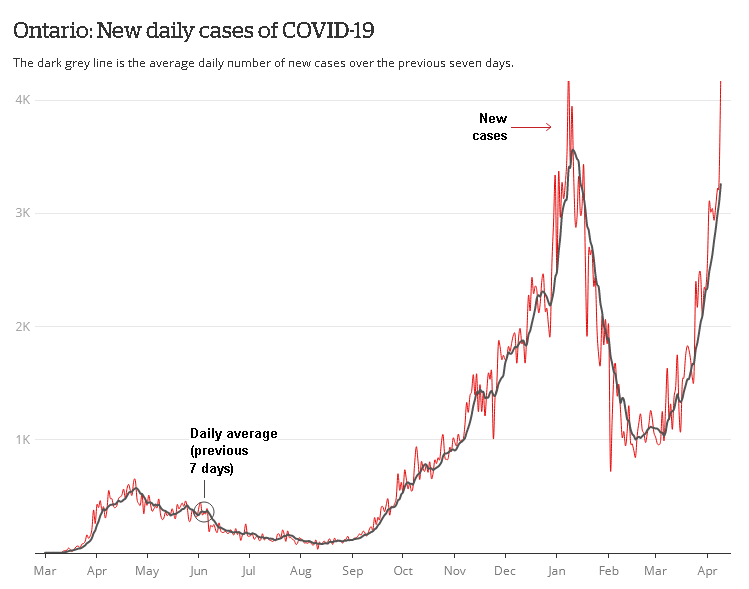 Many are of the belief that if the province had not relented late in February the dire crisis we face now could have been avoided. 
 By Pepper Parr By Pepper Parr
April 17th, 2021
BURLINGTON, ON
One of a series of articles on the Science Table data that led to the decisions the Premier made to limit mobility.
Three hours before Premier Doug Ford stood before the podium Friday afternoon for a virtual media event, the Science Table held its media event during which they set out the evidence they had given the government a day before.
That evidence is what the government used to justify the decision they made to order people to stay in their homes.
The evidence was compelling and there was a lot of it. The Gazette will report on that evidence in a series of shorter articles.
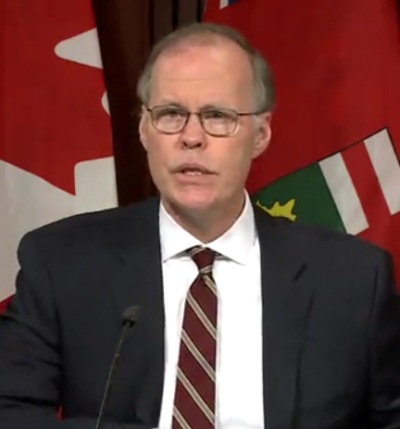 Dr. Adelstein Brown Dr. Adelstein Brown, who headed up a team of 120 volunteer scientists who gathered the evidence and did the analysis said, had some cogent comments for people who took the position that they could “work around this and do it their way” .
Many seem to think that is “not such a big deal”; they are more “angered by the rules than they are of getting Covid”.
Ignoring the rules is what got us to this point and why we now have to clamp down very hard.
Dr. Brown said there was “some” hope that we might still have a summer but there are huge obstacles to overcome before that can happen.
The focus for the medical community is getting people vaccinated, increasing capacity at the hospitals, dealing with the staff shortages and praying that doctors do not have to begin triaging patients.
For Dr. Brown and Dr. Williams the immediate concern was limiting mobility, forcing people to stay in their homes.
The data makes the point.
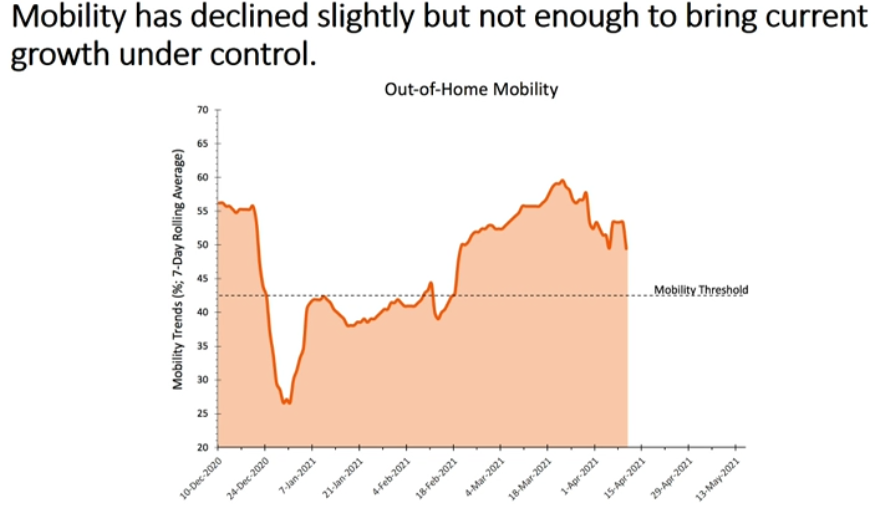 Mobility has to be driven down to below that threshold dotted line. The scientists know where it is happening and why – the challenge now is to stop it.
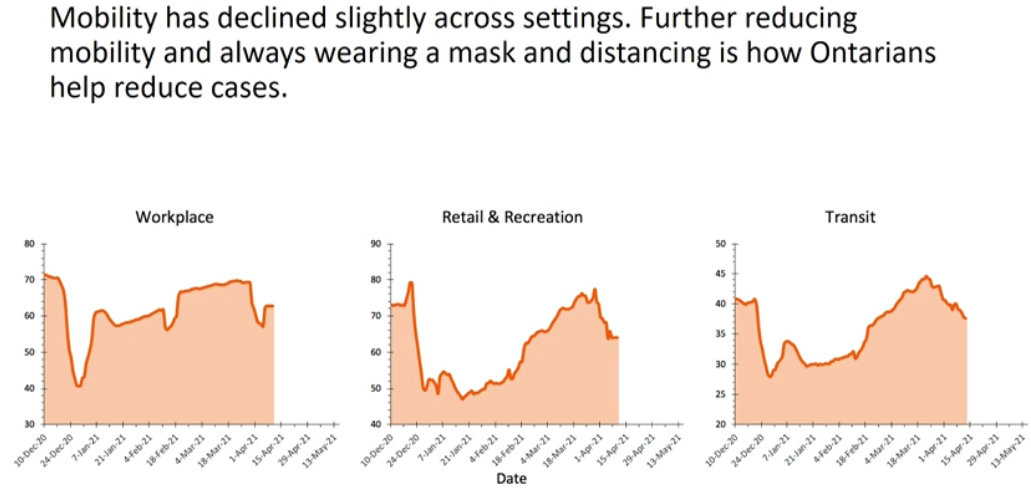 A breakdown of why people are traveling is revealing: workplace travel leads. People are being infected by a very contagious variant of Covid
Dr. Brown made it very clear – there is no silver bullet. The hope for a summer is with strong adherence – without that adherence to the Stay at Home rule – summer is gone.

|
|
 By Harry Green
By Harry Green
















 The pandemic amplified all the things Canada lauds itself for when it compares itself with the United States – as a nation that is a fraction of the size of the powerhouse next door often does. Its universal health care, a functional government, a communal spirit, and a rule-abiding culture were held up as reasons that case numbers stayed reasonably low. The U.S., meanwhile, bickered about masks and whether the virus was a hoax as cases surpassed anywhere else in the world.
The pandemic amplified all the things Canada lauds itself for when it compares itself with the United States – as a nation that is a fraction of the size of the powerhouse next door often does. Its universal health care, a functional government, a communal spirit, and a rule-abiding culture were held up as reasons that case numbers stayed reasonably low. The U.S., meanwhile, bickered about masks and whether the virus was a hoax as cases surpassed anywhere else in the world.



 The Science Table yesterday released the following:
The Science Table yesterday released the following:











 By Pepper Parr
By Pepper Parr
 By Staff
By Staff



 The most common excuse the Ford government has given for why they won’t implement a paid sick leave policy is that is conflicts with the federal government’s Canada Sickness Recovery Benefit (CSRB). Ford has repeatedly referenced this program. “There’s paid sick leave from the federal government,” Ford said on April 7. However, there are many differences between the CSRB and a mandatory sick leave policy and showing the details of the limitations of CSRB, helps to understand why it hasn’t been enough to slow workplace outbreaks.
The most common excuse the Ford government has given for why they won’t implement a paid sick leave policy is that is conflicts with the federal government’s Canada Sickness Recovery Benefit (CSRB). Ford has repeatedly referenced this program. “There’s paid sick leave from the federal government,” Ford said on April 7. However, there are many differences between the CSRB and a mandatory sick leave policy and showing the details of the limitations of CSRB, helps to understand why it hasn’t been enough to slow workplace outbreaks.




 Coming up with a way to create housing that people can afford to buy or rent – the name given to this is “attainable” housing.
Coming up with a way to create housing that people can afford to buy or rent – the name given to this is “attainable” housing.





 It was a City Council meeting called by the Mayor for 10 am on a Saturday morning. The first Saturday morning Council meeting this reporter recalls in the ten years I have been covering council.
It was a City Council meeting called by the Mayor for 10 am on a Saturday morning. The first Saturday morning Council meeting this reporter recalls in the ten years I have been covering council.















 Ray Rivers writes weekly on both federal and provincial politics, applying his more than 25 years as a federal bureaucrat to his thinking. Rivers was a candidate for provincial office in Burlington where he ran against Cam Jackson in 1995, the year Mike Harris and the Common Sense Revolution swept the province.
Ray Rivers writes weekly on both federal and provincial politics, applying his more than 25 years as a federal bureaucrat to his thinking. Rivers was a candidate for provincial office in Burlington where he ran against Cam Jackson in 1995, the year Mike Harris and the Common Sense Revolution swept the province.













